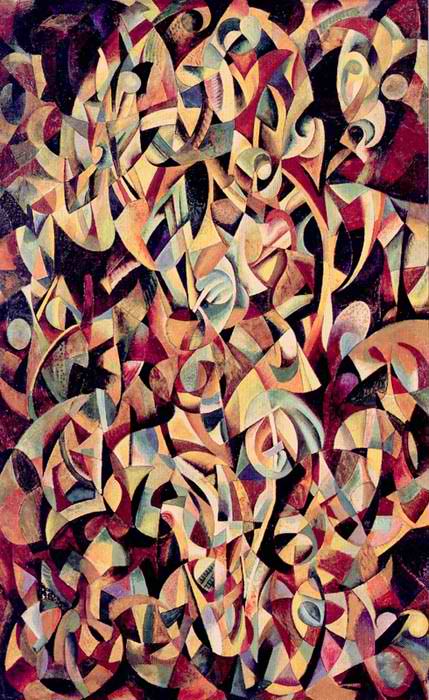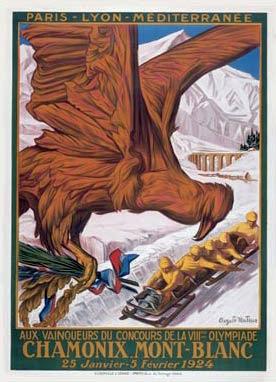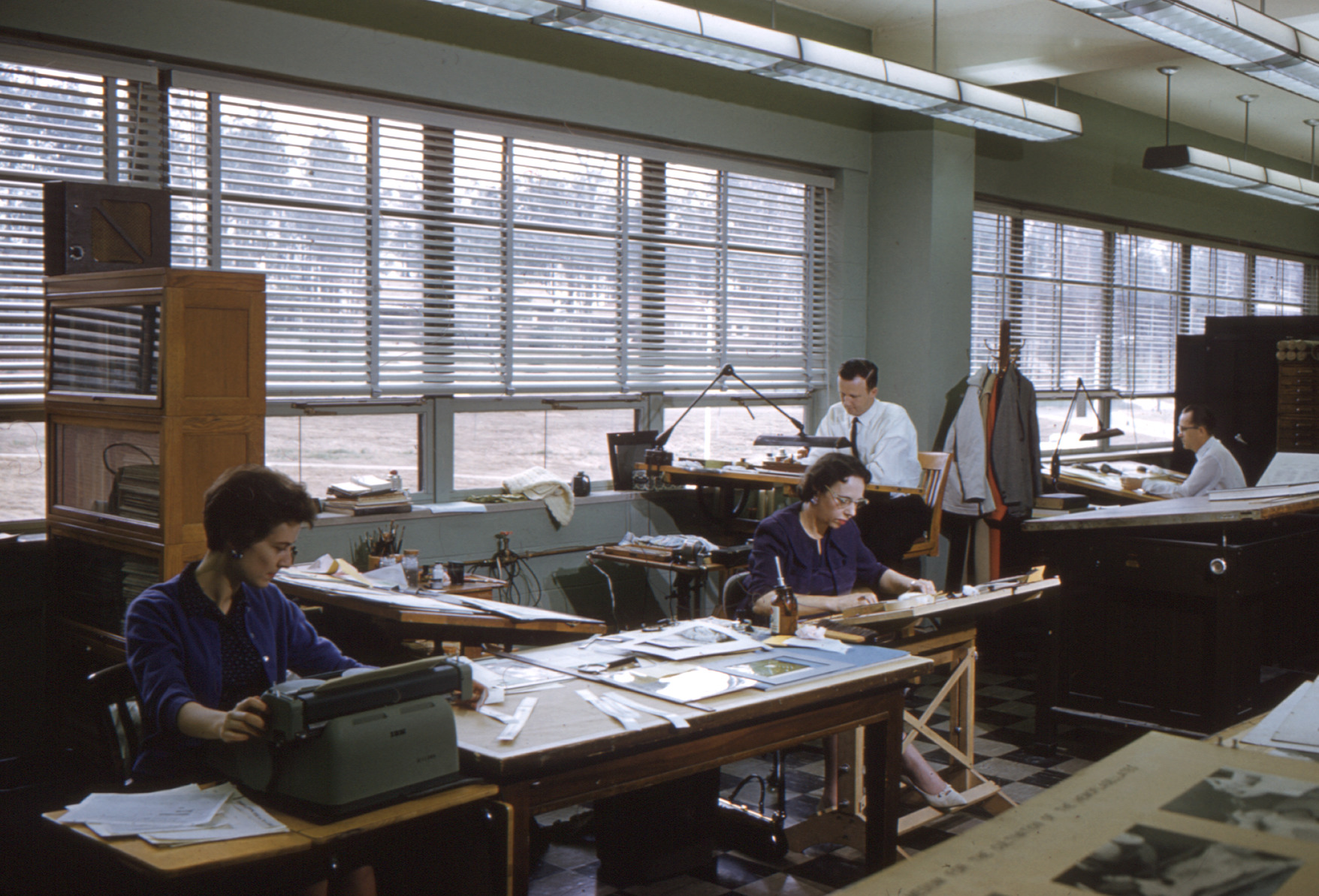|
Varvara Stepanova
Varvara Fyodorovna Stepanova (russian: Варва́ра Фёдоровна Степа́нова; – May 20, 1958) was a Russian artist. With her husband Alexander Rodchenko, she was associated with the Constructivist branch of the Russian avant-garde, which rejected aesthetic values in favour of revolutionary ones. Her activities extended into propaganda, poetry, stage scenery and textile designs. Biography Varvara Stepanova who was born in Kaunas (in modern-day Lithuania) came from peasant origins but was able to get an education at Kazan Art School, Kazan. There she met her later husband and collaborator Alexander Rodchenko. In the years before the Russian Revolution of 1917 they leased an apartment in Moscow, owned by Wassily Kandinsky. These artists became some of the main figures in the Russian avant-garde. The new abstract art in Russia which began around 1915 was a culmination of influences from Cubism, Italian Futurism and traditional peasant art. She designed Cubo-Futu ... [...More Info...] [...Related Items...] OR: [Wikipedia] [Google] [Baidu] |
Alexander Rodchenko
Aleksander Mikhailovich Rodchenko (russian: link=no, Алекса́ндр Миха́йлович Ро́дченко; – 3 December 1956) was a Russian and Soviet artist, sculptor, photographer, and graphic designer. He was one of the founders of Constructivism (art), constructivism and Russian design; he was married to the artist Varvara Stepanova. Rodchenko was one of the most versatile constructivist and Productivism (art), productivist artists to emerge after the Russian Revolution of 1917, Russian Revolution. He worked as a painter and graphic designer before turning to photomontage and photography. His photography was socially engaged, formally innovative, and opposed to a painterly aesthetic. Concerned with the need for analytical-documentary photo series, he often shot his subjects from odd angles—usually high above or down below—to shock the viewer and to postpone recognition. He wrote: "One has to take several different shots of a subject, from different points of ... [...More Info...] [...Related Items...] OR: [Wikipedia] [Google] [Baidu] |
Académie De La Palette
''Académie de La Palette'', also called ''Académie La Palette'' and ''La Palette'', (English: ''Palette Academy''), was a private art school in Paris, France, active between 1888 and 1925, aimed at promoting'' 'conciliation entre la liberté et le respect de la tradition'.'' Early on the ''Académie de La Palette'' developed a reputation as a progressive art school. In 1902, with Jacques-Émile Blanche as director of the academy, the concept had been 'any attempt at ''imitation'' are now abandoned' oute tentative d'imitation étant désormais abandonnée From 1912, when the Cubists Henri Le Fauconnier and Jean Metzinger took over the direction of the school, the role of the ''Académie de La Palette'' as the nexus for the avant-garde at the forefront of the Parisian art scene was secured. History From 1900 to 1914 many academies were formed in Paris under the direction of well-known established artists, such as the Académie Matisse, Académie Alexander Archipenko, Académi ... [...More Info...] [...Related Items...] OR: [Wikipedia] [Google] [Baidu] |
History Of Russian Design 03
History (derived ) is the systematic study and the documentation of the human activity. The time period of event before the invention of writing systems is considered prehistory. "History" is an umbrella term comprising past events as well as the memory, discovery, collection, organization, presentation, and interpretation of these events. Historians seek knowledge of the past using historical sources such as written documents, oral accounts, art and material artifacts, and ecological markers. History is not complete and still has debatable mysteries. History is also an academic discipline which uses narrative to describe, examine, question, and analyze past events, and investigate their patterns of cause and effect. Historians often debate which narrative best explains an event, as well as the significance of different causes and effects. Historians also debate the nature of history as an end in itself, as well as its usefulness to give perspective on the problems of the p ... [...More Info...] [...Related Items...] OR: [Wikipedia] [Google] [Baidu] |
1924
Events January * January 12 – Gopinath Saha shoots Ernest Day, whom he has mistaken for Sir Charles Tegart, the police commissioner of Calcutta, and is arrested soon after. * January 20– 30 – Kuomintang in China holds its first National Congress, initiating a policy of alliance with the Soviet Union and the Chinese Communist Party. * January 21 – The Earl of Athlone is appointed Governor-General of the Union of South Africa, and High Commissioner for Southern Africa.Archontology.org: A Guide for Study of Historical Offices: South Africa: Governors-General: 1910-1961 (Accessed on 14 April 2017) * January 22 – [...More Info...] [...Related Items...] OR: [Wikipedia] [Google] [Baidu] |
Aleksei Gan
Aleksei Mikhailovich Gan (Russian: Алексей Михайлович Ган; born Imberkh; 1887 or 1893 – 8 September, 1942) was a Russian anarchist and later Marxist avant-garde artist, art theorist and graphic designer. Gan was a key figure in the development of Constructivism after the Russian Revolution. Life Gan's involvement with creative activity began in 1917 when he became involved with the Moscow Union of Food Workers with whom he set up an amateur theatrical group. The group encompassed various political groupings and following the Bolshevik seizure of power, some joined the Red Army, others the Black Guards or affiliated to the Left Socialist-Revolutionaries. Gan reorganised the group as the Proletarian Theatre, which affiliated to the Moscow Federation of Anarchist Groups. Gan was the first to write on art in the anarchist newspaper ''Anarkhiia'' (Anarchy) when it introduced an art section in early 1918. In March 1921, Gan was one of the seven artists, in ... [...More Info...] [...Related Items...] OR: [Wikipedia] [Google] [Baidu] |
Kasimir Malevich
Kazimir Severinovich Malevich ; german: Kasimir Malewitsch; pl, Kazimierz Malewicz; russian: Казими́р Севери́нович Мале́вич ; uk, Казимир Северинович Малевич, translit=Kazymyr Severynovych Malevych ., group=nb (Запись о рождении в метрической книге римско-католического костёла св. Александра в Киеве, 1879 год // ЦГИАК Украины, ф. 1268, оп. 1, д. 26, л. 13об—14. – 15 May 1935) was a ... [...More Info...] [...Related Items...] OR: [Wikipedia] [Google] [Baidu] |
Fashion Design
Fashion design is the Art (skill), art of applying design, aesthetics, clothing construction and natural beauty to clothing and its Fashion accessory, accessories. It is influenced by culture and different trends, and has varied over time and place. "A fashion designer creates clothing, including dresses, suits, pants, and skirts, and accessories like shoes and handbags, for consumers. He or she can specialize in clothing, accessory, or Jewellery, jewelry design, or may work in more than one of these areas." Fashion designers Fashion designers work in a variety of different ways when designing their pieces and accessories such as rings, bracelets, necklaces and earrings. Due to the time required to put a garment out in market, designers must Fashion forecasting, anticipate changes to consumer desires. Fashion designers are responsible for creating looks for individual garments, involving shape, color, fabric, trimming, and more. Designers conduct research on fashion trends and in ... [...More Info...] [...Related Items...] OR: [Wikipedia] [Google] [Baidu] |
Theatrical Scenery
Theatrical scenery is that which is used as a setting for a theatrical production. Scenery may be just about anything, from a single chair to an elaborately re-created street, no matter how large or how small, whether the item was custom-made or is the genuine item, appropriated for theatrical use. History The history of theatrical scenery is as old as the theatre itself, and just as obtuse and tradition bound. What we tend to think of as 'traditional scenery', i.e. two-dimensional canvas-covered 'flats' painted to resemble a three-dimensional surface or vista, is a relatively recent innovation and a significant departure from the more ancient forms of theatrical expression, which tended to rely less on the actual representation of space senerial and more on the conveyance of action and mood. By the Shakespearean era, the occasional painted backdrop or theatrical prop was in evidence, but the show itself was written so as not to rely on such items to convey itself to the audience. ... [...More Info...] [...Related Items...] OR: [Wikipedia] [Google] [Baidu] |
Graphic Arts
A category of fine art, graphic art covers a broad range of visual artistic expression, typically two-dimensional, i.e. produced on a flat surface.Graphic art " ''Encyclopædia Britannica''. Britannica.com. Retrieved 21 February 2016. The term usually refers to the arts that rely more on line, color or tone, especially drawing and the various forms of ;"Graphic art." ''The Oxford Dictionary of Art''. 3rd ed. Ed. Ian Chilvers. Oxford: Oxford University Press, 2004. p. 309. it is sometimes understood to refer specifically to processes, such as ... [...More Info...] [...Related Items...] OR: [Wikipedia] [Google] [Baidu] |
Painting
Painting is the practice of applying paint, pigment, color or other medium to a solid surface (called the "matrix" or "support"). The medium is commonly applied to the base with a brush, but other implements, such as knives, sponges, and airbrushes, can be used. In art, the term ''painting ''describes both the act and the result of the action (the final work is called "a painting"). The support for paintings includes such surfaces as walls, paper, canvas, wood, glass, lacquer, pottery, leaf, copper and concrete, and the painting may incorporate multiple other materials, including sand, clay, paper, plaster, gold leaf, and even whole objects. Painting is an important form in the visual arts, bringing in elements such as drawing, composition, gesture (as in gestural painting), narration (as in narrative art), and abstraction (as in abstract art). Paintings can be naturalistic and representational (as in still life and landscape painting), photographic, abstract, nar ... [...More Info...] [...Related Items...] OR: [Wikipedia] [Google] [Baidu] |
Philosophy
Philosophy (from , ) is the systematized study of general and fundamental questions, such as those about existence, reason, knowledge, values, mind, and language. Such questions are often posed as problems to be studied or resolved. Some sources claim the term was coined by Pythagoras ( BCE), although this theory is disputed by some. Philosophical methods include questioning, critical discussion, rational argument, and systematic presentation. in . Historically, ''philosophy'' encompassed all bodies of knowledge and a practitioner was known as a ''philosopher''."The English word "philosophy" is first attested to , meaning "knowledge, body of knowledge." "natural philosophy," which began as a discipline in ancient India and Ancient Greece, encompasses astronomy, medicine, and physics. For example, Newton's 1687 ''Mathematical Principles of Natural Philosophy'' later became classified as a book of physics. In the 19th century, the growth of modern research universiti ... [...More Info...] [...Related Items...] OR: [Wikipedia] [Google] [Baidu] |



.jpg)







